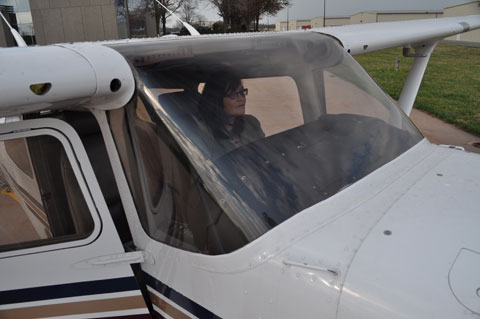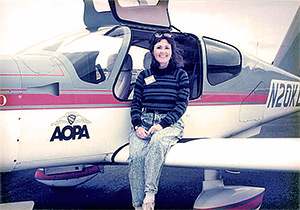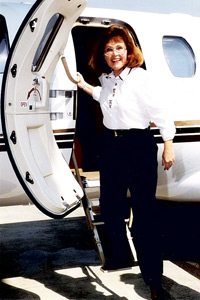Resuming the Journey: Aircraft familiarization
A pilot’s return to flight

I was nervous. It had been nine years since I’d even sat in a general aviation airplane. Now I was going for my first recurrency lesson in N330ME, AOPA’s 2000 Millennium Model Cessna 172S. My flight instructor, Tom Zecha, was patient and calm, no doubt seeing my anxiety and trying to minimize it. We took our time with the preflight and talked our way around the airplane as I noted its intricacies. Tom had me follow the POH preflight checklist item by item, and was careful to keep me on track if I skipped even the smallest item. I was so hyped up I climbed up on the strut to check the fuel without even needing a step stool, although I did notice it was a harder reach than it had been a decade ago!
Much of my training had been in an older Skyhawk, so I was surprised when I climbed into the cockpit how unfamiliar the panel seemed. It took me a while to sort out what I was seeing, and Tom talked me through each of the dials. I was glad to see the trim wheel was where I remembered. I’m a big fan of trim, as I’m unable to muscle down anything much bigger than a 25-pound sack of dog food.
We moved through the pre-start procedures and I hiccupped at “fuel pump on.” What? I looked at Tom. This is a Cessna—isn’t the fuel gravity fed? Turns out this baby has a fuel injected, 180-horsepower engine. During preflight, I had noticed it takes 8 quarts of oil, rather than 7. It also carries more gas than an older Skyhawk—56 gallons as opposed to 43. And the tanks were topped off. We hollered “clear prop” and started up.
 I taxied like a drunk out to the run-up area—if anyone was watching, they surely would have thought I was a newbie as we zigzagged our way to the run-up area for Runway 30. My legs were shaking. Once or twice I tried to steer with the yoke, rather than my feet, and Tom looked over grinning and said, “Doesn’t do much good, does it?”
I taxied like a drunk out to the run-up area—if anyone was watching, they surely would have thought I was a newbie as we zigzagged our way to the run-up area for Runway 30. My legs were shaking. Once or twice I tried to steer with the yoke, rather than my feet, and Tom looked over grinning and said, “Doesn’t do much good, does it?”
We completed the runup and agreed that Tom would work the radios while I concentrated on flying. He announced on the CTAF that we were taking off, and I turned 0ME onto the runway, aligned with the center line, added full power, and took off. “Nicely done,” Tom said. I relaxed just a little.
 We flew to a nearby practice area over farmland, mindful of the restricted P-40 airspace of Camp David about 10 nm west. Tom directed me to fly a specific heading and altitude, then to fly 30-degree turns to the left and right. They were not too bad. I began to be a bit more comfortable. Simulated engine-out emergency procedures followed, establishing best glide, identifying a landing spot, and flying to it—well, to within 500 feet of it.
We flew to a nearby practice area over farmland, mindful of the restricted P-40 airspace of Camp David about 10 nm west. Tom directed me to fly a specific heading and altitude, then to fly 30-degree turns to the left and right. They were not too bad. I began to be a bit more comfortable. Simulated engine-out emergency procedures followed, establishing best glide, identifying a landing spot, and flying to it—well, to within 500 feet of it.
As we headed back to the airport, I noticed it was a nice day out and allowed myself a nervous smile. I arrived at pattern altitude on crosswind and turned downwind for Runway 30. Tom announced our position. The 10 knots of wind was right down the runway. I’d been taught to fly a fairly tight pattern and so I did, and set her down nicely on the runway. We decided to go, again, and fly the pattern one more time. The second landing was pretty good, too. Now, I was laughing. This wasn’t going to be so hard, after all.
Kathy Dondzila, is the manager of technical communications for AOPA’s Pilot Information Center. She has 300 hours total time and an instrument rating. After being an inactive pilot for nine years, she is working to get back in the left seat.



